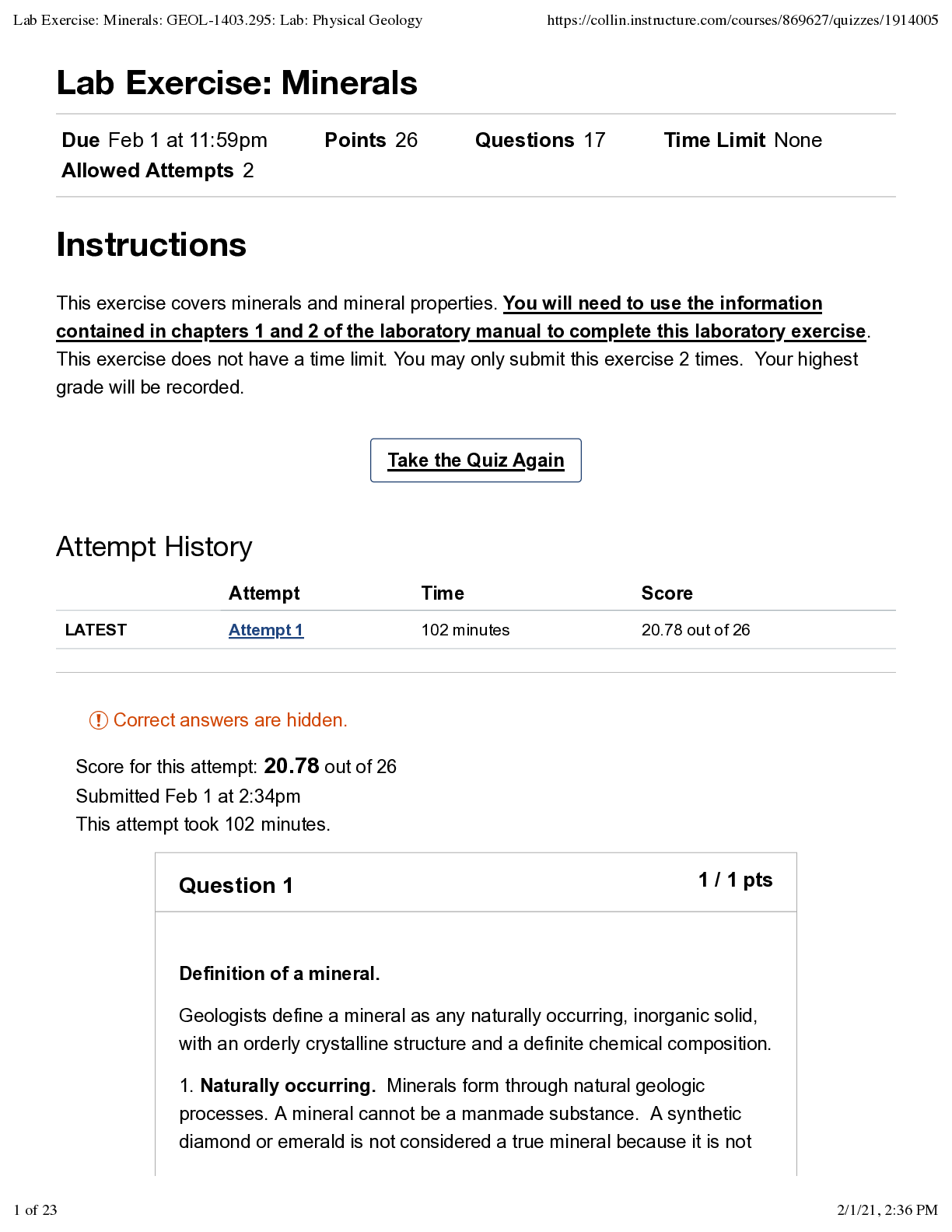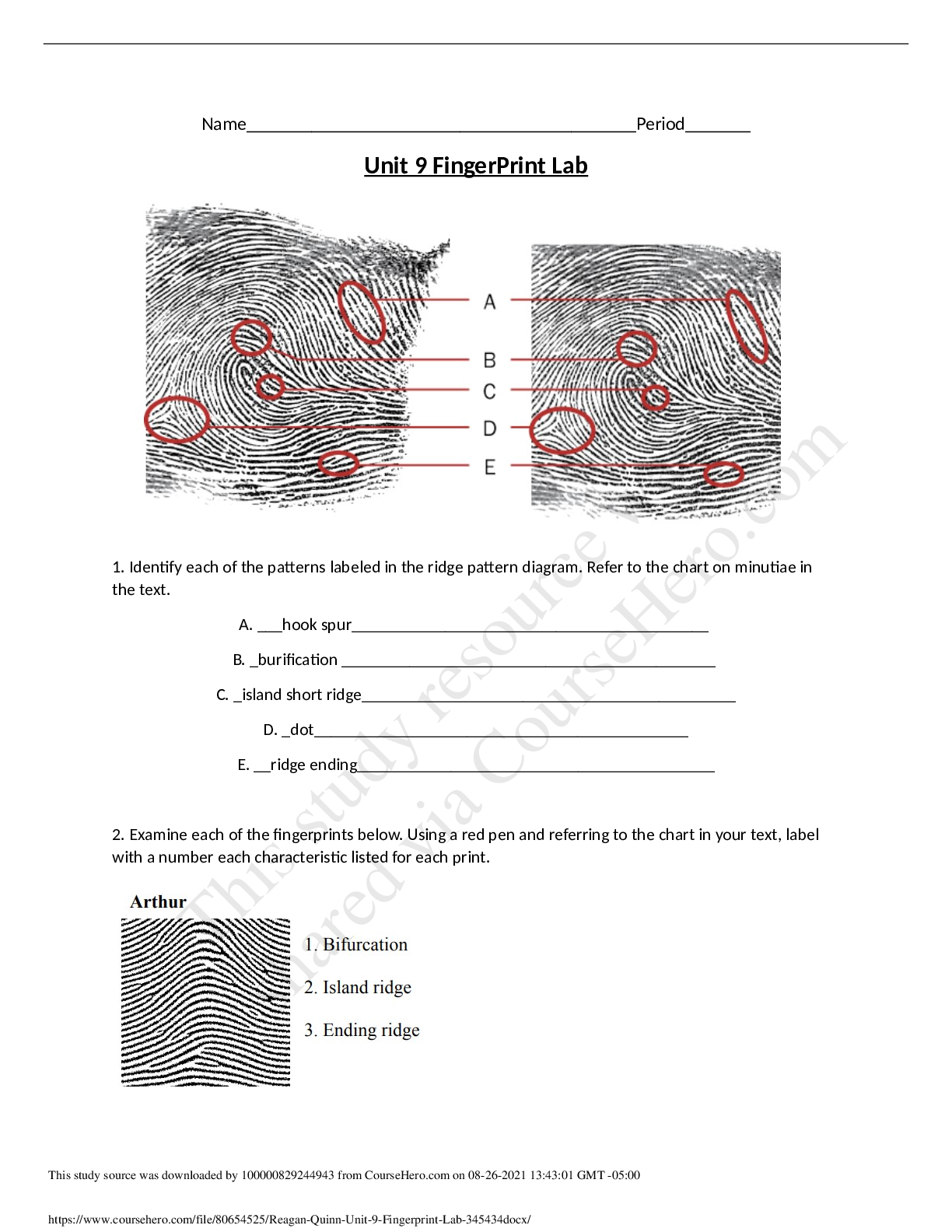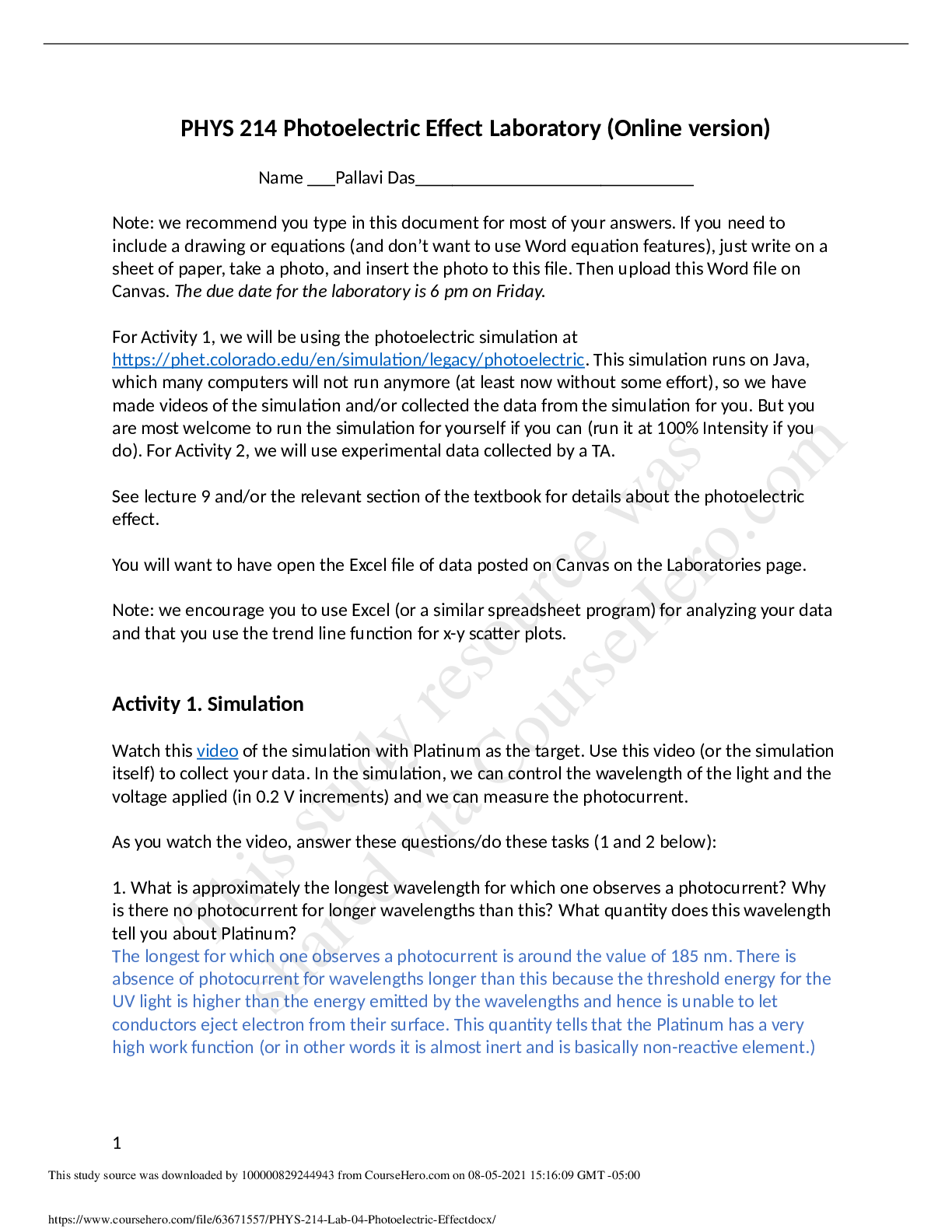Engineering > Lab Report > University of OttawaMCG 2360Materials Lab 4 (All)
University of OttawaMCG 2360Materials Lab 4
Document Content and Description Below
Abstract The objective of this experiment was to observe the precipitate hardening of a 6061 Aluminum alloy and compare the results to other samples of 6061 Al exposed to different heat treatment p... rocesses. Precipitate hardening is a heat treatment process that produces uniformly dispersed particles within a metal’s grain structure (Wojes 2017). These dispersed particles restrict the dislocation motion, which in turn strengthens the metal. The experiment will determine each specimen’s strength and hardness by performing a three-point bend test and a Vickers Microhardness test. After conducting the experiment, the materials’ strengths are compared. The untreated sample was the strongest, with an extension of -24.52 mm and was able to withstand a load of approximately 700N before fracture. The annealed sample was the weakest, with an extension of -23.92 mm and was able to withstand a load of only approximately 250N before fracture. In addition, the elastic modulus for the samples tested were relatively similar. Through our results, it can be determined that different methods of heat treatment have different effects on the strengths of different materials.2 Table of Contents Introduction 3 Figure 1 4 Figure 2 5 Methodology 7 Results 8 Figure 3 8 Figure 4 9 Discussion 10 Conclusion 13 References 143 Introduction The purpose of the experiment is to examine the effects of strengthening techniques, such as the precipitate hardening mechanism, and how it increases an aluminum alloy’s hardness and strength. The increase of strength and hardness, due to precipitation hardening, are investigated through the performance of the three-point bend test, as well as demonstrated in the Vickers Microhardness test, on five 6061 Aluminum alloy specimens after the conduction of different heat treatments. The material examined in this lab, 6061 Aluminum, is chemically composed of 97.9% aluminum, 1% magnesium, 0.60% silicon, 0.28% copper, and 0.20 chromium. Aluminum is characterized by a low density of 2.7 g/cm^3 , is highly conductive both electrically and thermally (159 W/mK), and is relatively resistant to corrosion (AZoM, 2012). Aluminum has a Face-Centered Cubic (FCC) crystal structure, and since FCC materials are fairly temperatureindependent with respect to their plasticity, aluminum can retain its ductility at fairly low temperatures (Callister Jr. & Rethwisch, 2013) [Show More]
Last updated: 1 year ago
Preview 1 out of 15 pages
Instant download

Buy this document to get the full access instantly
Instant Download Access after purchase
Add to cartInstant download
Reviews( 0 )
Document information
Connected school, study & course
About the document
Uploaded On
Jul 15, 2021
Number of pages
15
Written in
Additional information
This document has been written for:
Uploaded
Jul 15, 2021
Downloads
0
Views
49














